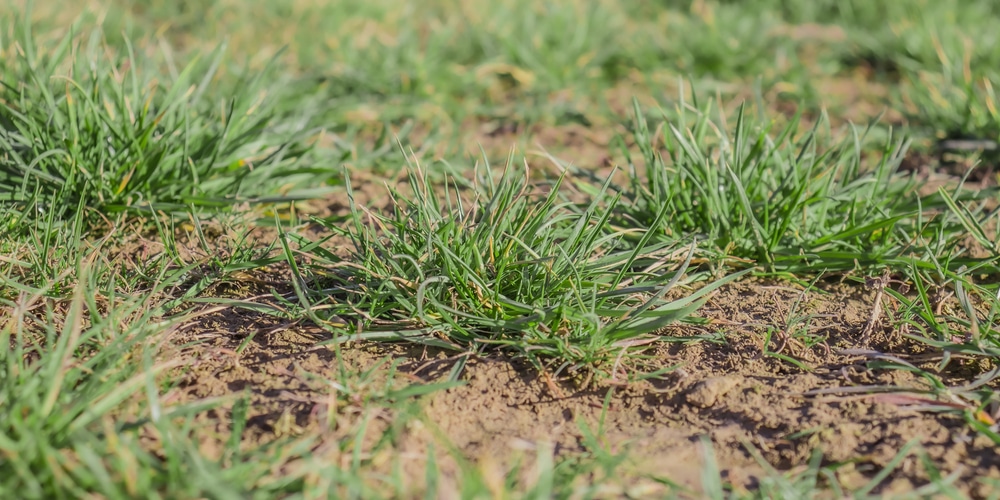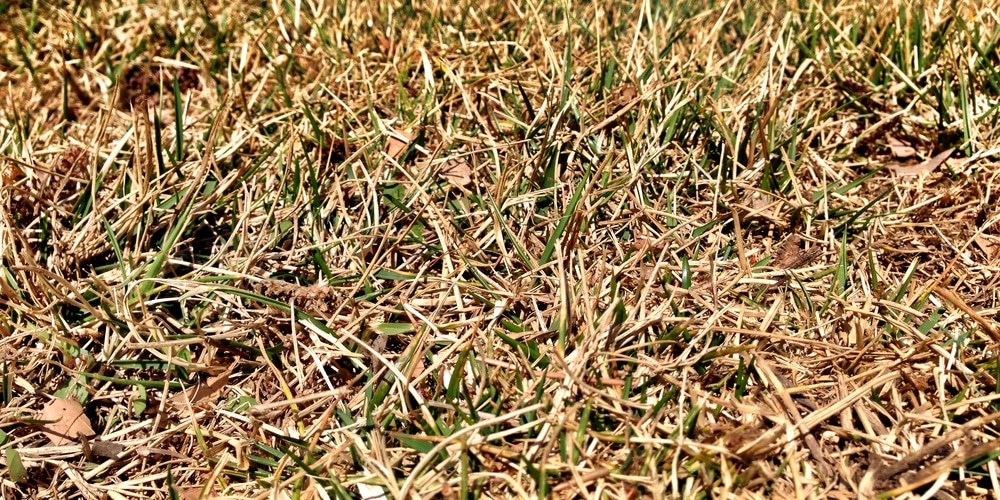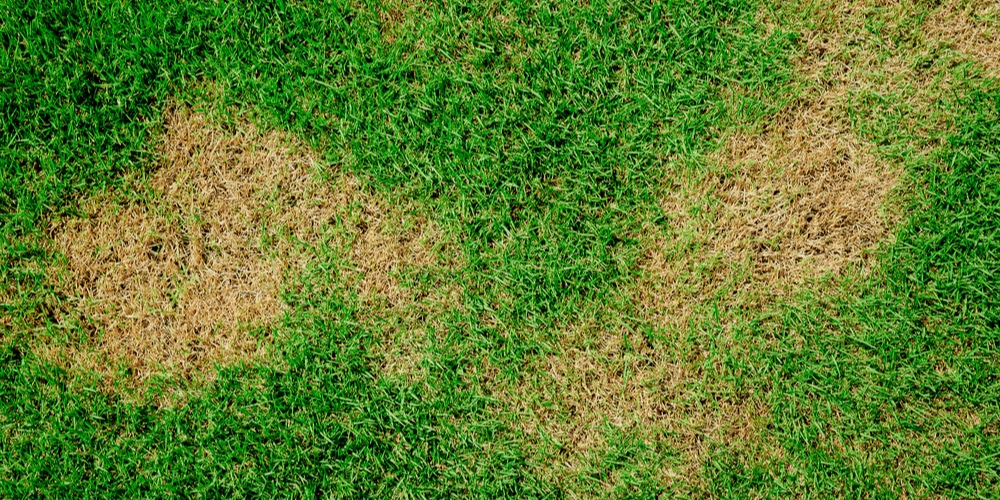None ever said that growing a lawn is an easy task. It takes time and effort. However, it is an excellent way to increase the looks of your property (and be proud of your garden).
If you don’t know this already, maintaining a healthy turf involves more than watering it once or twice a week and mowing it regularly. You’ll also need to watch out for pests and diseases and ensure that your grass gets all the nutrients it needs to thrive.

But sometimes, things might not go as well as you hope. And that shouldn’t make you give up on having a lawn.
All you have to do is identify what might be causing issues to your grass and take measures to revert your turf to its natural conditions. For instance, what are those dry spots on your lawn?
And how do you deal with them? We have collected all the information you should know on the subject in this essential guide! So, keep reading to find answers to these questions.
What Are Dry Patches On Your Lawn?
Noticing your lawn developing dry patches can be frustrating. After all, with all efforts spent on getting healthy grass, not getting satisfactory results can demotivate you. But don’t worry! We are here to help you!
To begin with, one of the most common causes of dry spots on your lawn is the weather. After all, exposure to heat and sunburn can cause your grass to be dry.
However, it isn’t the only thing that can result in a patchy lawn. For instance, heavy and compacted soil can also cause patches. For this reason, you will often see them in trafficked areas and under trees.
Additionally, if you have dogs, you might have noticed that the spot where they like to do their businesses most often may look brown. That’s because their urine is acidic and will affect the natural grass’ pH level, causing it to turn brown or yellow.
Another reason that might cause patches is a fungal infection that grows among the roots of the grass and makes your turf’s blades water repellent. Even when watering your lawn, it will suffer from severe drought conditions.
Shallow soil and too much fertilizer might also cause dry patches. And if you are curious about identifying each issue and taking measures to revert the problem, keep reading.
What To Do About Dry Patches?

Take action depending on what’s causing the dry patches to form. For instance, if the problem is hot and dry weather, consider changing your watering schedule to increase moisture in your grass.
Alternatively, if you suspect the dog’s urine to be the cause, consider having your pet doing its business elsewhere. You will identify this issue because the damage caused by a dog’s urine will be around a smaller area.
As too much compaction might also cause browning, we recommend selecting an adequate substrate for your lawn. It should be rich, well-draining, and aerated, especially for heavy-foot traffic areas. Soils that are too heavy will have problems absorbing nutrients, which will cause them to stay dry (even after heavy rain), hence the discoloration.
On the other hand, if a fungal infection might be the issue, you should get your hands on a suitable fungicide. Don’t forget to follow the instructions you find on the label and avoid overdoing it!
Using chemical products on your lawn should always be your last choice. After all, it might harm nearby plants and remove beneficial pollinators. Plus, applying too much product can burn the ground and alter its ability to absorb nutrients.
Should You Increase Watering Around Dry Patches?
Because many things can cause dry spots on your lawn, you should understand the reason for their development before changing your watering schedule. After all, adding more moisture to the dry patches will not always solve the issue. Sometimes, it might even make things worse!
Of course, if the hot and dry weather seems to be causing the dry spots to form, increasing the watering frequency (or volume) might be a good idea to keep your lawn healthy. But if the issue is a fungal infection, watering your lawn more often might make the environment even more optimal for the fungi’s spread.
Also, consider improving aeration and reducing compaction before taking other measures. You can do so using a garden fork. Increasing air flow might sound like a trivial solution. However, it is essential to improve drainage and nutrient absorption (including water). If necessary, you can use a wetting agent to soak the lawn.
How Much Should You Water Your Lawn?
Watering your lawn isn’t necessarily complicated. However, if you have never done it before, you might be wondering how much water turf needs. The truth is that moisture requirements will depend on the type of grass you planted and your local climate conditions.
We always recommend deeply watering your grass less frequently rather than adding light moisture daily. Doing so will contribute to healthier roots. Also, to increase absorption, you should water your lawn early in the morning or evening. Follow these tips, and you should have no issues watering your grass!
Related Article: Why is My Grass Turning Yellow?
